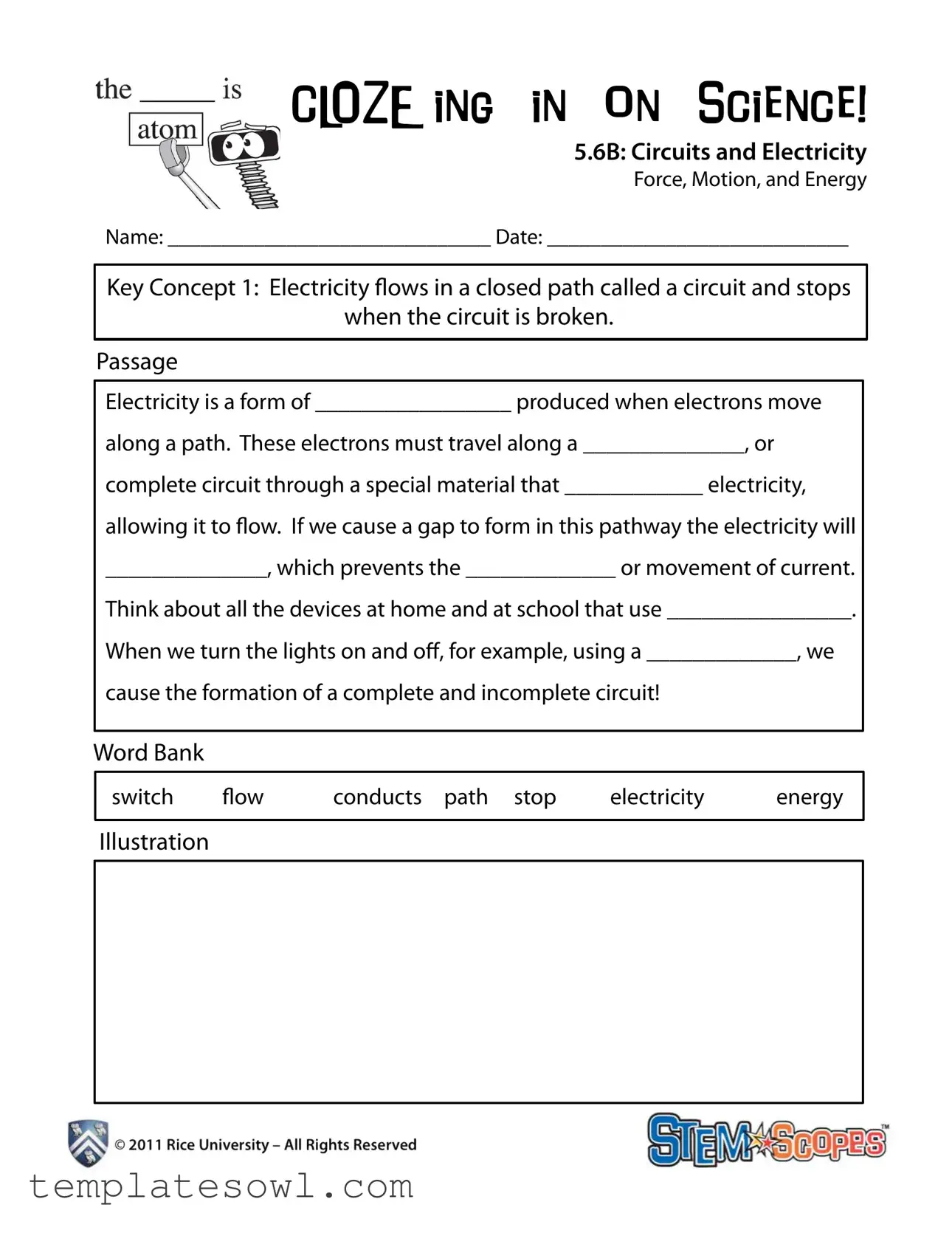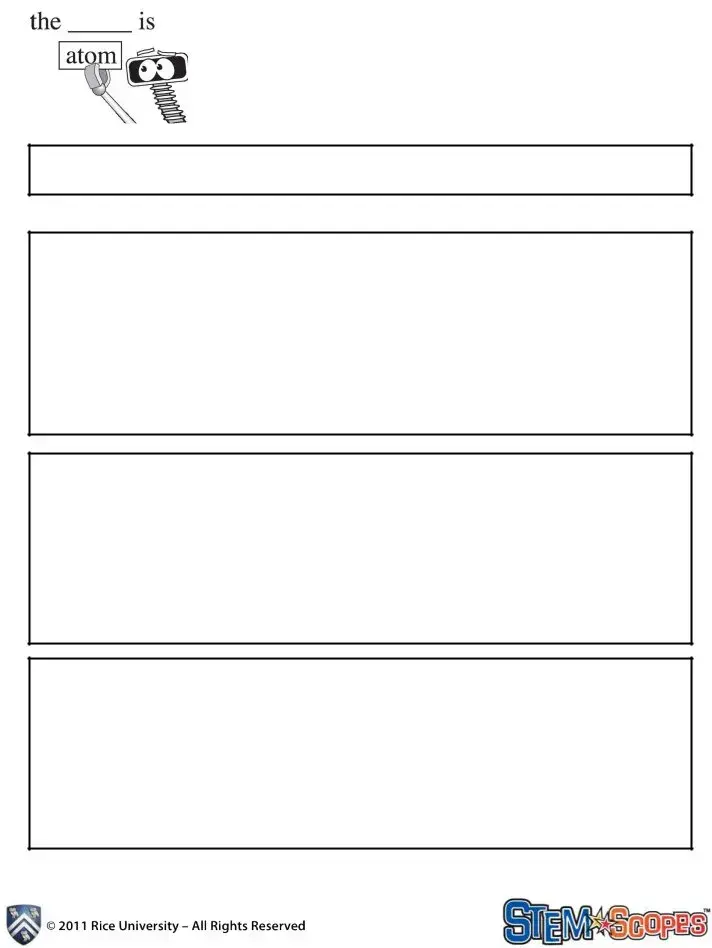CLOZE-ING IN ON SCIENCE!
5.6B: Circuits and Electricity
Force, Motion, and Energy
Name: ______________________________ Date: ____________________________
Key Concept 1: Electricity ws in a closed path called a circuit and stops when the circuit is broken.
Passage
Electricity is a form of _________________ produced when electrons move
along a path. These electrons must travel along a ______________, or
complete circuit through a special material that ____________ electricity,
allowing it to w. If we cause a gap to form in this pathway the electricity will
______________, which prevents the _____________ or movement of current.
Think about all the devices at home and at school that use ________________.
When we turn the lights on and off, for example, using a _____________, we
cause the formation of a complete and incomplete circuit! Word Bank
switch |
ow |
conducts path stop |
electricity |
energy |
Illustration
CLOZE-ING IN ON SCIENCE!
5.6B: Circuits and Electricity
Force, Motion, and Energy
Key Concept 2: We can demonstrate that electricity can produce light,
heat, and sound when owing through a circuit
Passage
There are plenty of items we depend on and enjoy having that use electricity. This electricity is _______________, or transformed, into other
forms of energy in these devices. The television transforms electricity into ___________ energy since we can see the picture, and
____________ energy since we can hear it. When the toaster is turned
on, it produces ____________ energy since it toasts our bread. All of
these things only happen when the circuit is complete, which means electricity can ____________.
Word Bank
light |
ow |
sound |
changed |
thermal/heat |
Illustration |
|
|
|
|
|
|
|
|
|
|
|
|
|
|
CLOZE-ING IN ON SCIENCE!
5.6B: Circuits and Electricity
Force, Motion, and Energy
Key Concept 3: Many everyday devices use electricity to produce light,
heat, and sound.
Passage
Some devices, such as our doorbell, mainly produce ____________ energy
when they are operated. Other devices like lamps use electricity to produce_____________ energy since we can see the results in a dark room.
Are some of your favorite devices dependent on the use of electricity? If so, they are likely transforming electrical energy into other forms, such as
___________, __________, or _____________. Which is the most useful for
you? Do you prefer one form of energy over another? Think about the forms of energy you use each and every day.
Word Bank
light
sound
light
heat
sound
Illustration
CLOZE-ING IN ON SCIENCE!
5.6B: Circuits and Electricity
Force, Motion, and Energy
Answer Key
Electricity is a form of energy produced when electrons move along a path. These electrons must travel along a path, or complete circuit through a special material that conducts electricity, allowing it to ow. If we cause a gap to form in this pathway the electricity will stop, which prevents the ow or movement of current. Think about all the devices at home and at school that use electricity. When we turn the lights on and off, for example, using a switch, we cause the formation of a complete and incomplete circuit!
There are plenty of items we depend on and enjoy having that use electricity. This electricity is changed, or transformed, into other forms of energy in these devices. The television transforms electricity into light energy since we can see the picture, and sound energy since we can hear it. When the toaster is turned on, it produces thermal/heat energy since it toasts our bread. All of these things only happen when the circuit is complete, which means electricity can ow.
Some devices, such as our doorbell, mainly produce sound energy when they are operated. Other devices like lamps use electricity to produce light energy since we can see the results in a dark room. Are some of your favorite devices dependent on the use of electricity? If so, they are likely transforming electrical energy into other forms, such as heat, sound, or light. Which is the most useful for you? Do you prefer one form of energy over another? Think about the forms of energy you use each and every day.




